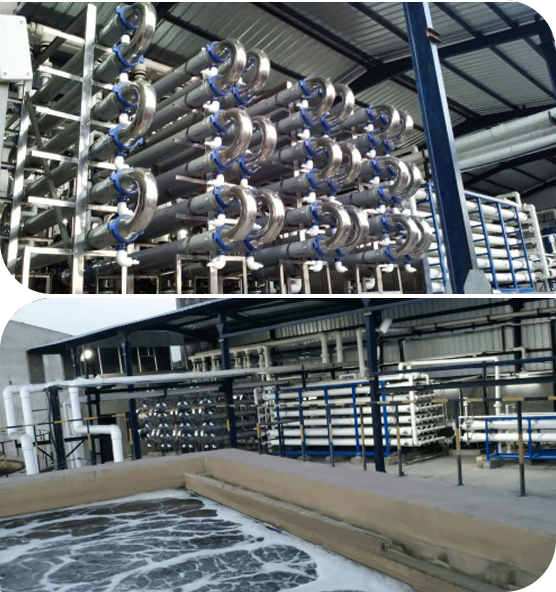
Waterman Engineers Australia is probably the main producers of Zero Liquid Discharge technique. A ZLD technique is usually a treatment process that is employed to remove each of the liquid waste from the process. The target of ZLD drinking water remedy is to cut back wastewater economically and create potable h2o that may be healthy for standard use. Zero discharge program is an advanced procedure strategy that comprises ultrafiltration, reverse osmosis, evaporation and fractional electro deionization. And we're a well-recognised supplier of ZLD systems.
In lots of Industries, including power, oil & gasoline, chemicals, mining and Many others, a large amount of wastewater is created that must be managed. Conventionally, this discharge of wastewater is finished by way of a plant outfall to the surface area drinking water physique like an evaporation pond, or sometimes deep nicely injected. These techniques result in quite a few environmental issues by the general public in several regions of the entire world, as h2o is really a scarce supply and its administration should be monitored. These considerations have resulted from the institution of ZLD processes by several industries to minimize their environmental footprint and greatly enhance sustainability. And, Waterman Engineers Australia are very best ZLD suppliers you will find for This method.
Homes OF ZERO LIQUID DISCHARGE SYSTEM
The Qualities of a Zero Liquid Discharge technique can differ according to the precise structure and technologies employed. Even so, some widespread Houses of ZLD devices involve:
H2o Conservation: Considered one of the key aims of ZLD programs is usually to conserve water by reducing the discharge of liquid waste in to the surroundings.
Higher Water Purity: ZLD units are built to develop substantial-top quality water that may be absolutely free from impurities and contaminants, which makes them suitable for use in several industrial processes.
Flexibility: ZLD techniques tend to be built to accommodate a wide variety of input liquid streams, which makes them versatile and suited to use in numerous industries.
Highly developed Wastewater Treatment method: Zero liquid discharge methods use Highly developed wastewater remedy strategies to take away impurities and contaminants from the effluent, making high-good quality h2o.
Waste Reduction: ZLD programs assistance minimize squander by reducing the amount of liquid waste that should be disposed of and by producing a concentrated, sound squander product that can be securely disposed of.
Electricity Performance: ZLD systems could be Electricity-intense due to the higher Strength necessities of evaporation and other wastewater therapy processes. Nonetheless, improvements in know-how are Zld System Manufacturer Zero Liquid Discharge System building Zero liquid discharge units extra Electrical power-economical and price-helpful.
Waterman Engineers Australia manufactures Zero Liquid Discharge (ZLD) units meant to take out all liquid squander, aiming to create potable water and reduce environmental impact. Their ZLD systems ordinarily involve ultrafiltration, reverse osmosis, evaporation, and fractional electro deionization. Critical technologies utilized are Slipping Film Brine Concentrators, Compelled Circulation Crystallizer, and Many others, that has a two-phase process of pre-focus and evaporation/crystallization to Recuperate and reuse h2o. These programs are adaptable to various industries, emphasizing h2o conservation, substantial water purity, waste reduction, and energy effectiveness. Technical requirements are different and customizable, considering components like water supply, flow fee, and feed water excellent.
The need for Zero Liquid Discharge (ZLD) programs occurs from your requirement to deal with environmental considerations connected to water scarcity and pollution. In industries like ability, oil & gas, and mining, wide quantities of wastewater are generated. Usually, this wastewater is discharged into bodies of h2o, causing pollution and depleting clear h2o means. ZLD methods intention to reduce these impacts by managing and recycling wastewater within the industrial method, therefore conserving drinking water, cutting down squander, and promoting sustainability.
When considering the specialized specs of a Zero Liquid Discharge (ZLD) program, critical features to deal with include the water resource it will treat, the system's flow rate, the quality of feed h2o, the phases of treatment method included, the recovery rate of h2o, solutions for focus disposal, resources of building, operating conditions, and system automation and Command. These components ensure the method's effectiveness, toughness, and effectiveness in treating and recycling industrial wastewater.
Zero Liquid Discharge (ZLD) vegetation supply Advantages such as drinking water conservation, waste reduction, and air pollution prevention, contributing to environmental sustainability. They are applicable in industries like electric power era, oil and fuel, chemical substances, and mining, exactly where they assist in handling industrial wastewater correctly, minimizing the ecological footprint, and complying with strict environmental restrictions. These methods are very important in places facing drinking water scarcity and for industries aiming to further improve their sustainability and operational efficiency.
FAQs for the Zero Liquid Discharge (ZLD) method typically address its operational ideas, Charge-usefulness, servicing requirements, environmental effect, applicability throughout various industries, and regulatory compliance. These queries enable users recognize the process's benefits, specialized needs, and suitability for his or her precise wastewater administration needs.
1. Zero Liquid Discharge (ZLD) is really a wastewater treatment method course of action meant to eliminate all liquid waste.
two. The system's components are influenced by the specific industrial process, wastewater composition, and regulatory specifications.
3. Effluent therapy plants remove pollutants from textile effluents to prevent environmental contamination.
four. Pros include h2o conservation, air pollution reduction, and regulatory compliance.
5. The aim is to minimize environmental impact by recycling h2o and lessening squander.
6-nine. Effluent cure vegetation are stages in wastewater treatment: primary (Actual physical separation), secondary (biological treatment), and tertiary (advanced procedure).
10. Device functions contain filtration, sedimentation, Organic treatment method, and disinfection.
11. Restricting parameters are aspects that impact the treatment's effectiveness, like pH and contaminant concentration.
12. Style criteria include things like movement level, effluent composition, and ideal top quality of addressed drinking water.